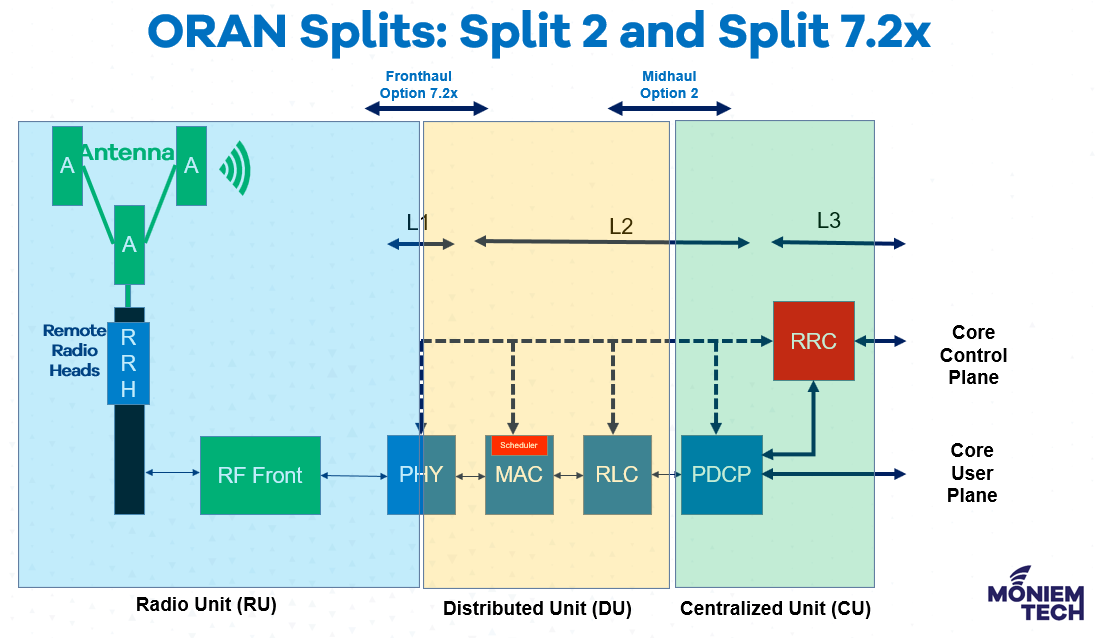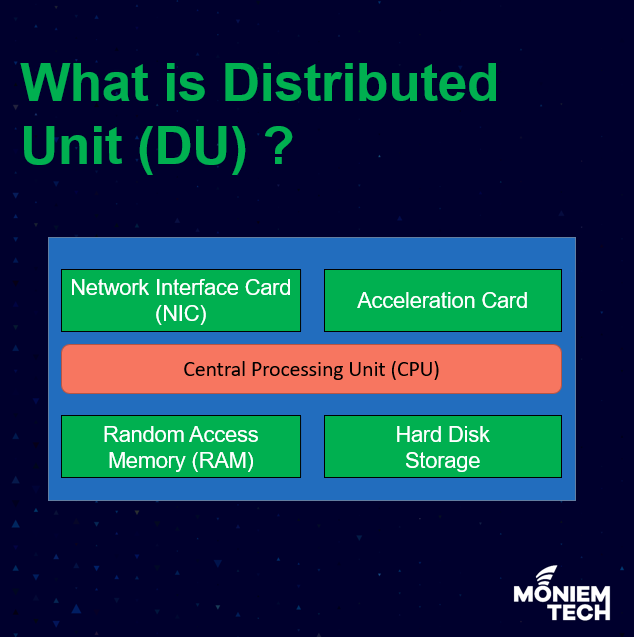3GPP defined a new RAN architectural in Release 15, where the gNB (Site Name for 5G) is logically split into three entities denoted as:
- CU: Centralized Unit.
- DU: Distributed Unit.
- RRU: Remote Radio Unit.
The RAN functions that correspond to each of the three entities are determined by the so-called split points. After a thorough analysis of the potential split options, 3GPP decided to focus on just two split points: so-called split 2 and split 7, although, only the former one was finally standardized.

The CU hosts the RAN functions above split 2, the DU runs those below split 2 and above split 7 and the RRU hosts the functions below split 7 as well as all the RF processing.
The O-RAN Alliance further specified a multi-vendor fronthaul interface between the RRU and DU, by introducing a specific category of split 7 called split 7-2x, whose control, data, management, and synchronization planes are perfectly defined. The midhaul interface between CU and DU is also specified by 3GPP and further upgraded by the O-RAN Alliance to work in multi-vendor scenarios.

For more details about Split 7.2x, please the below article:
What is Distributed Unit (DU) in Open RAN?
The Distributed Unit (DU) is the main processing unit that is responsible for the High Physical, MAC, and RLC protocols in the RAN protocol stack.
In Open RAN or vRAN world, the DU is a server based on Intel Architecture optimized to run the real-time RAN functions located below split 2 and to connect with the RRUs through a fronthaul interface based on O-RAN split 7-2x. It is the real-time nature of the DU which motivates the need to optimize the servers required to run DU workloads.
The main components for DU design:

- The Central Processing Unit (CPU) performs the main baseband processing tasks.
- Example: 3rd Generation Intel Xeon Scalable Processor.
- To make the processing more efficient, an ASIC-based acceleration card is to assist with the baseband workload processing. It’s used to offload the CPUs from the main processor to handle the FEC RAN layer 1 (L1) forward error correction (FEC)s as they are one of the most compute-intensive 4G and 5G workloads
- Example: Intel Dedicated Accelerator ACC100.
- The Network Interface Card (NIC) with Time Sync capabilities can be used for both fronthaul and midhaul interfaces, with suitable clock circuits that provide the unit with the clock signals required by digital processing tasks. Open RAN solutions rely on stringent time synchronization requirements for end-to-end latency and jitter and to ensure this level of precision on COTS hardware, network-based synchronization protocols like Synchronous Ethernet (SyncE) and IEEE 1588v2 Precision Time Protocol (PTP) are key to ensuring synchronization at the physical layer.
- Example: Intel Ethernet 800 Series card.
- Random-Access Memory (RAM) for the temporary storage of data.
- Hard Disk devices for persistent storage of data even when the unit is powered off.
